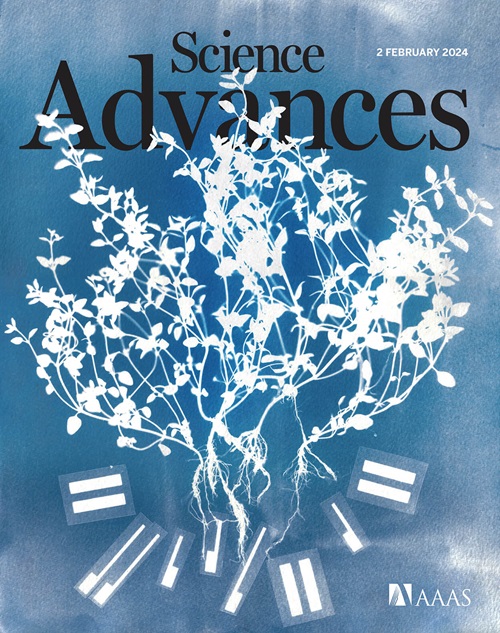Single-cell profiling of the amphioxus digestive tract reveals conservation of endocrine cells in chordates
IF 11.7
1区 综合性期刊
Q1 MULTIDISCIPLINARY SCIENCES
引用次数: 0
Abstract
Despite their pivotal role, the evolutionary origins of vertebrate digestive systems remain enigmatic. We explored the cellular characteristics of the amphioxus (Branchiostoma floridae) digestive tract, a model for the presumed primitive chordate digestive system, using bulk tissue companioned with single-cell RNA sequencing. Our findings reveal segmentation and a rich diversity of cell clusters, and we highlight the presence of epithelial-like, ciliated cells in the amphioxus midgut and describe three types of endocrine-like cells that secrete insulin-like, glucagon-like, and somatostatin-like peptides. Furthermore, Pdx, Ilp1, Ilp2, and Ilpr knockout amphioxus lines revealed that, in amphioxus, Pdx does not influence Ilp expression. We also unravel similarity between amphioxus Ilp1 and vertebrate insulin-like growth factor 1 (Igf1) in terms of predicted structure, effects on body growth and amino acid metabolism, and interactions with Igf-binding proteins. These findings indicate that the evolutionary alterations involving the regulatory influence of Pdx over insulin gene expression could have been instrumental in the development of the vertebrate digestive system.

文昌鱼消化道的单细胞分析揭示了脊索动物中内分泌细胞的保存
尽管它们起着关键作用,但脊椎动物消化系统的进化起源仍然是个谜。我们探索了文昌鱼(Branchiostoma floridae)消化道的细胞特征,这是一种假定的原始脊索动物消化系统的模型,使用大量组织伴随单细胞RNA测序。我们的研究结果揭示了细胞簇的分割和丰富的多样性,我们强调了文昌鱼中肠中上皮样、纤毛细胞的存在,并描述了三种分泌胰岛素样、胰高血糖素样和生长抑素样肽的内分泌样细胞。此外,Pdx、Ilp1、Ilp2和Ilpr敲除文昌鱼系表明,在文昌鱼中,Pdx不影响Ilp的表达。我们还揭示了文文鱼Ilp1和脊椎动物胰岛素样生长因子1 (Igf1)在预测结构、对身体生长和氨基酸代谢的影响以及与igf结合蛋白的相互作用方面的相似性。这些发现表明,涉及Pdx对胰岛素基因表达的调节影响的进化改变可能有助于脊椎动物消化系统的发育。
本文章由计算机程序翻译,如有差异,请以英文原文为准。
求助全文
约1分钟内获得全文
求助全文
来源期刊

Science Advances
综合性期刊-综合性期刊
CiteScore
21.40
自引率
1.50%
发文量
1937
审稿时长
29 weeks
期刊介绍:
Science Advances, an open-access journal by AAAS, publishes impactful research in diverse scientific areas. It aims for fair, fast, and expert peer review, providing freely accessible research to readers. Led by distinguished scientists, the journal supports AAAS's mission by extending Science magazine's capacity to identify and promote significant advances. Evolving digital publishing technologies play a crucial role in advancing AAAS's global mission for science communication and benefitting humankind.
 求助内容:
求助内容: 应助结果提醒方式:
应助结果提醒方式:


